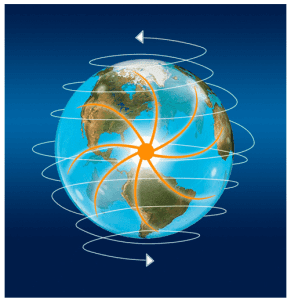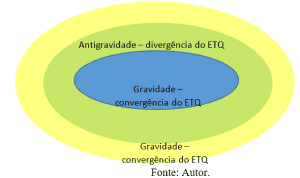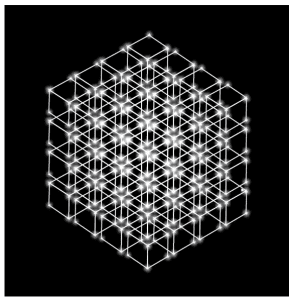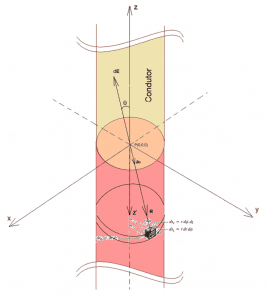ORIGINAL ARTICLE
BELLAS, Leonardo Dias [1]
BELLAS, Leonardo Dias. General Study on Infinity and Wave Propagation. Revista Científica Multidisciplinar Núcleo do Conhecimento. Year 05, Ed. 11, Vol. 18, pp. 36-63. November 2020. ISSN: 2448-0959, Access link: https://www.nucleodoconhecimento.com.br/fisica-en/wave-propagation
SUMMARY
This study proposes a better understanding of infinity and the relationship with the propagation of waves, followed by some questions about all graphs in wave propagation research and propose new solutions on the subject, making a general study about infinity, to later identify its relationship with the propagation of waves. The problem we will discuss here are current mathematical and physical reasons and references regarding infinity and wave propagation. Aiming to update wave propagation research charts as a new way to observe and discuss about infinity. To perform this work, logical, mathematical and physical observations were made, proven through demonstrations and graphs. The meaning of the information in this study is to improve the concept for the observation of electromagnetic wave propagations.
Keyword: Infinite, waves spread.
1. INTRODUCTION
A physical scientific observation was made in 2011 about infinity and the propagation of waves, and from the information that could be understood, this study was carried out to make some questions such as a citation in internet research that waves propagate ”Perpendicularly or Transversally”, so this citation will be questioned and through observations and some evidence , a new methodology will be proposed on how to observe the waves and the reasons of infinity. Through this study below, it will be demonstrated with the technical examples, through the application of figures/graphs and with logical, mathematical and physical observations to demonstrate the statements made here.
2. SETTING INFINITY IN SEARCHES
Definition of infinity on the Internet:
It is a concept used in various fields, such as mathematics, philosophy and theology. It is represented with the symbol ∞, and in mathematics it is a near-numerical notion used in propositions. It is distinguished between infinite potential and current infinity. But it is in mathematics that the concept has its deepest roots, and the discipline has contributed the most to its understanding. (MAOR, 1991).
DEFINITION [infinite] ADJECTIVE
1. that there is no limit; endless
2. immense; incalculable, immeasurable
3. character of what is or seems to be unlimited
4. greatness whose values are not limited
5. which has no limits, because it may be or is currently greater than any given amount of the same nature
6. God; the notion of divinity; which transcends human understanding
7. minus us. that infinitive
8. infinite that, in the limit process, takes negative values
9. which, in the limit process, takes positive values. (BING, online, s/p)
3. DEVELOPMENT OF THE THESIS
Now we will ask a question to develop this thesis. How many Infinites are there? The correct answer to this question is:
There are 2 Infinites. There are two reasons for observable Infinity, one distinct from the other.
Now how to observe or identify the two infinites? Let’s use math to observe them. For example, let’s visualize zero or neutral so that we can find the 2 Infinites. The logic below the Integers follows:
-∞, -9, -8, -7, -6, -5, -4, -3, -2, -1 – 0 +1, +2, +3, +4, +5, +6, +7, +8, +9, +∞
A more complete answer as noted above is that there are 2 Infinites, you can count 2 Infinites. (An Infinite on the positive right side and another Infinity on the negative left side, one distinct from the other), both applied in mathematics and applied in physics that will later be explained better. There are two distinct reasons for defining an infinity. A reason, negative direction or force and another reason, positive direction or strength.
So the zero is neutral in the center and always between the negative and positive, making it possible to go to the negative infinity on the left side and the positive infinity on the right side.
And by observing these two infinites we can identify that negative infinity is opposed to positive infinity, both by visualizing in mathematics and in physics, they are exposed observable opposite each other. For example, in the mathematics of integers, the (-1) negative is located opposite to (1+) a positive, the negative (-2) two is located opposite to the (2+) two positive, and so successively until it reaches infinity on each side, negative Infinity and Positive Infinity are located opposite each other. Negative left and positive right. And neutral always in the middle, between negative and positive.
So we can calculate with infinity too, for example:
2 + 2 = 4 (two plus two, equal to four)
2 – 2 = 0 (two minus two, equal to zero)
3 – 3 = 0 (three minus three, equal to zero)
∞ – ∞ = 0 (an infinity minus an infinity, equal to zero)
So in mathematics by subtracting the positive infinity through negative infinity the result will be equal to zero.
The negative and positive infinites are opposite, mathematically observable and physically observable as well, as will be explained in this study.
We’re going to apply it to physics. By viewing the chart below we will observe and thus we can relate and identify the logic of whole numbers, negative infinity and positive infinity, applied in a basic circuit of a common battery (Stack). We observed that the batteries have two poles, one negative pole and another positive pole in opposite directions as well as integers. The negative pole in a direction and direction opposite the positive pole.
The two propagation forces of electromagnetic waves are opposite. Negative from right to left, and positive from left to right, the negative pole has a negative direction and the positive pole has a positive sense, expressed and observed both in the logic of the integers and in the basic circuit of a common battery. As the chart below follows:
Graph 1: ratio integers, negative/positive, common battery.
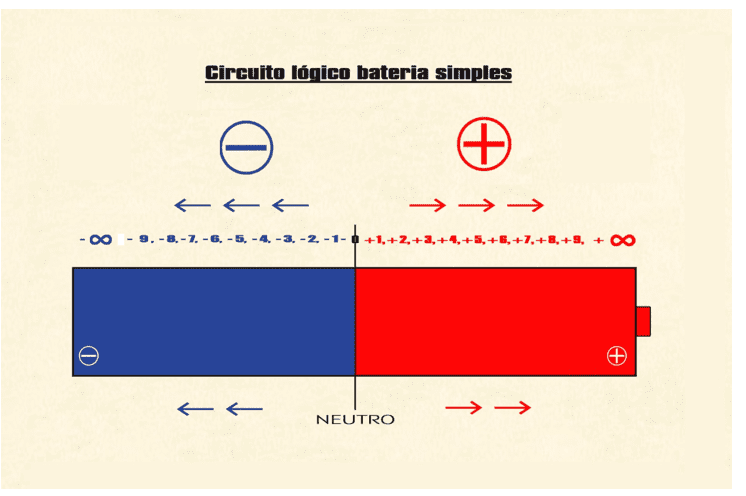
As shown in the chart, the following information about negative and positive roots follows:
Left = Negative / Right = Positive.
Negative Infinity / Positive Infinity
Left Infinity / Infinity Right
Negative pole / positive pole
Negative Wave or Pole = Negative Direction / Wave or Positive Pole = Positive Direction.
Mathematical direction of negative numbers equal to left center / Mathematical direction of positive numbers, equal right center.
Negative Wave Propagation Force = Right to Left / Positive Wave Propagation Force = Left to Right
Neutral is in the middle between negative and positive both applied and visualized in the graph in the basic mathematics of integers, and in the physical circuit of the battery, as we can thus observe in the graph. In mathematics and physics there is always neutral.
And also whatever position you turn to or rotate the stack, the negative will always be opposite to the positive and vice versa.
And as shown in the figure above these concepts of logical observations can be applied both in the basic mathematics of whole numbers, as well as in physical circuits of batteries and circuits in general, so we can also relate as to the propagation of waves, because waves propagate through two electromagnetic waves, a negative wave and another positive wave that are opposite.
Examples of graphs on the internet on how electromagnetic waves propagate will now be given, and later a new concept or example of how waves propagate will be proposed. Warning that all the results of this search on the internet are mistakenly expressed and do not really conwegraphically as the waves propagate.
4. WAVE PROPAGATION CHARTS IN RESEARCH
Graph 2: Internet search wave propagation.
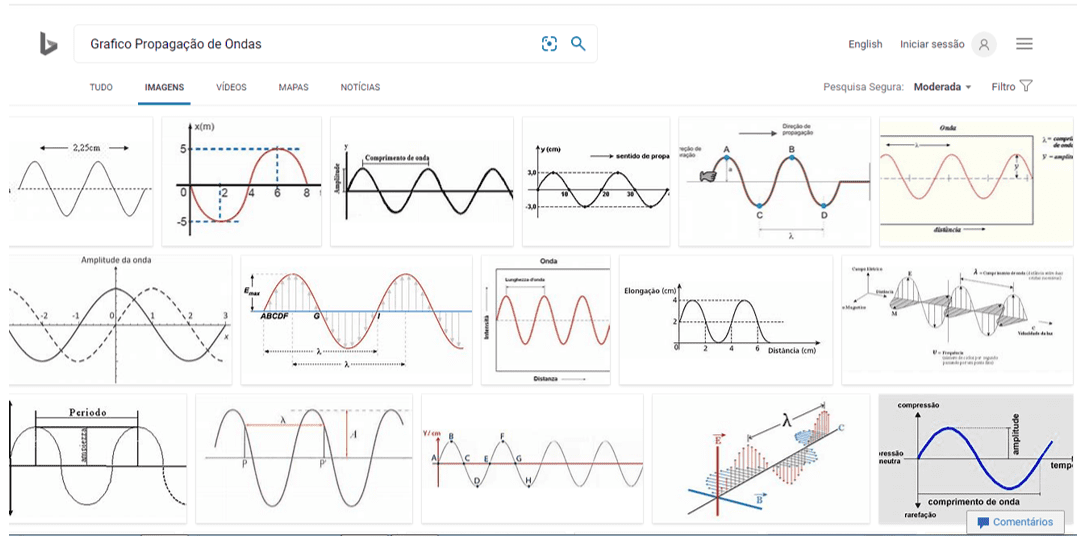
Graph 3: Internet search wave propagation.
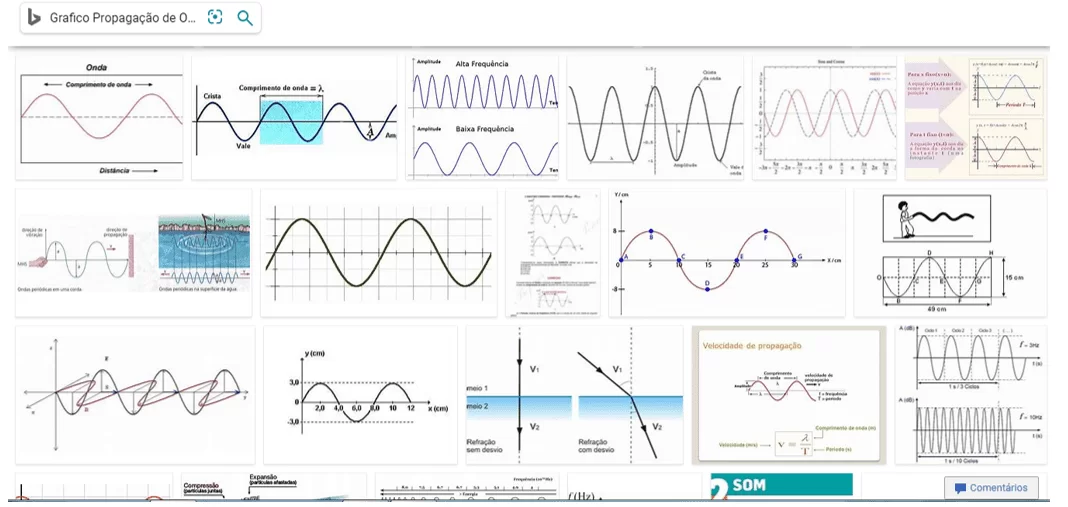
Graph 4: Internet search wave propagation.
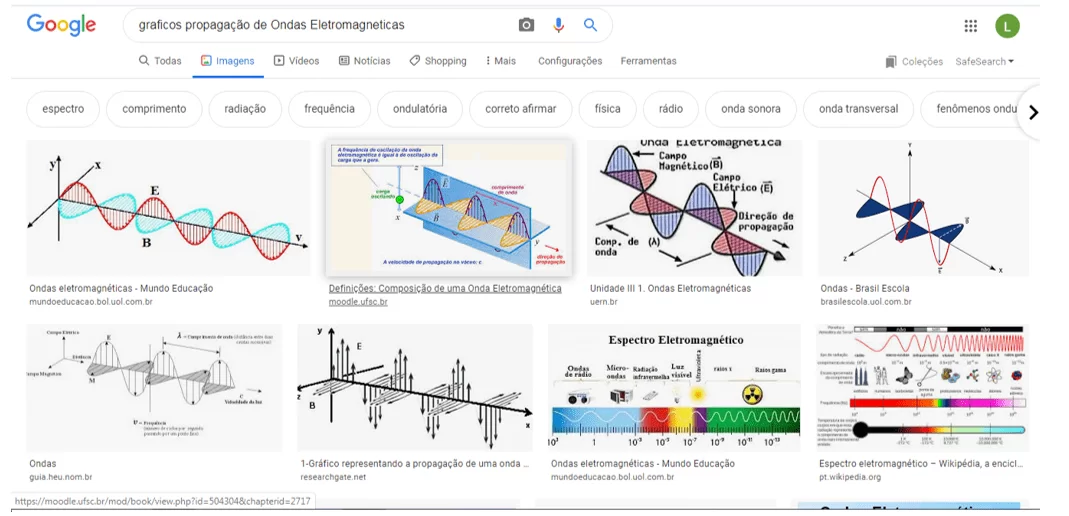
Graph 5: Internet search wave propagation.
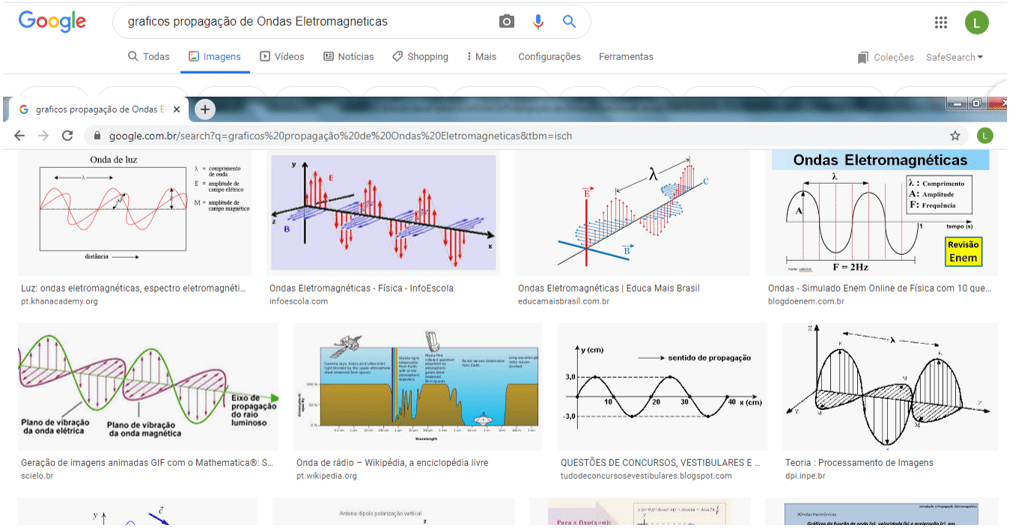
In these internet search charts, most of them only have one wave and one wave direction, and have other charts that have two waves, but they do not correctly identify the directions of the waves, they are graphically expressed in a way that does not really fit.
5. ANALYZING THE TWO ELECTROMAGNETIC WAVES
Research was conducted on wave propagation, one of the first citations that appears as a research definition of wave propagation on the Internet is this:
What are electromagnetic waves?
An electromagnetic wave is formed by oscillating and perpendicular electrical and magnetic fields. The direction of propagation of the electromagnetic wave, in turn, is perpendicular (angle of 90º) to the vectors of electric and magnetic field.
Due to the angle formed between the disturbance and the direction of propagation, electromagnetic waves are characterized as transverse. Like all waves, they can transfer energy between different points of space, but they do so without any transport of matter, since they are not capable of it.
Electromagnetic waves have as characteristics: wavelength, propagation speed, amplitude and frequency, and are likely to suffer any type of known wave phenomenon, such as reflection, refraction, polarization, diffraction, scattering, absorption and interference. (HELERBROCK, online, s/p)
Figure 6: internet search
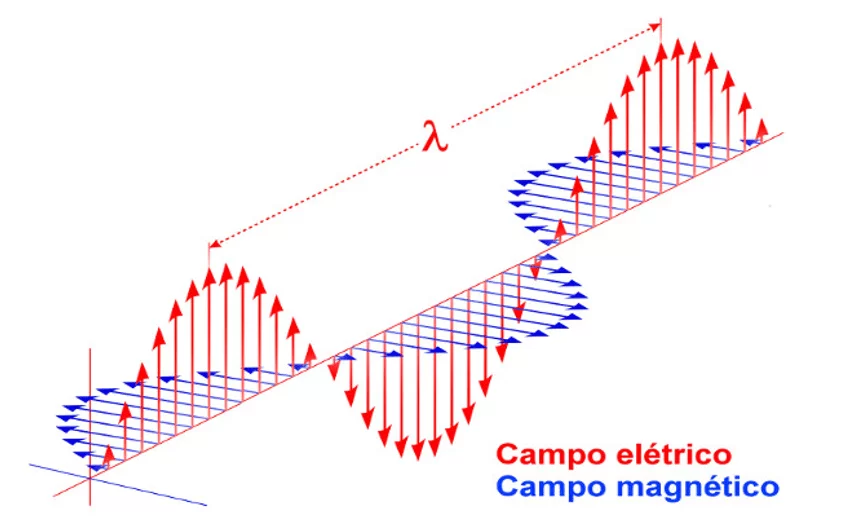
In fact, this quote they say that the waves are “perpendicular or characterized as transverse”, but no, the negative and positive waves are not perpendicular, they are opposite. In this study it is being proposed that a negative wave has a negative sense different from the positive wave that has a positive meaning, they are two distinct waves opposite each other. Negative wave in the negative direction opposite the positive wave that has its positive direction.
The waves do not mix or intersect, one wave is different from the other, and each wave has its specific purpose, which is negative will always be a reason, field or negative force and what is positive will always be a reason, field or positive force.
For example, in one magnet we can observe these two fields or forces, they repel or attract, if you try to connect the positive of one magnet in the positive of another magnet, they repel themselves, which is the same if you try to connect the negative with the negative, they will repel themselves as well. You have to fit the positive in the negative for the magnet poles to attract and connect, one wave or force is only negative and the other wave or force is only positive. Two different waves from each other. The negative left side of the magnet has a frequency, field, strength, and negative ratio, and the positive right side of the Magnet has a positive frequency, field, strength, and ratio.
Infinite integers, waves, poles, circuits, logical systems, batteries, magnets, including in the wave propagation chart in all examples and concepts in which we can apply negative and positive, are two distinct reasons, always being the negative opposite to the positive. And later it will be applied with more logical observations of how the negative opposite the positive behaves.
A famous phrase that exists where the negative and positive can be applied is the ”Opposites attract”, this is a statement that there are two distinct reasons, one negative and the other positive, which oppositeattract, an example given here is the magnet. The two infinite energies opposite the magnets attract.
The existence of these two forces, negative and positive, are considered a fact.
The basis, or the principle that supports this reasoning is to propose an updated concept both dissertation and graphic for the observation of how waves propagate, because analyzing this concept that is being questioned that the waves are ”transverse or perpendicular” is mistaken, including graphically.
Thus observing and performing the interpretation of the graph above that is being contested, in this analysis, brings the understanding that the waves intersect, and in the example of this graph, it is as if positive wave had the vertical direction and the negative wave had the horizontal direction, so in this case they would be perpendicular, they would cross, the waves and electromagnetic fields would mix , but no, the waves do not mix or intersect, which is negative will always be negative and what is positive will always be positive, they are just opposite, negative wave in a negative direction and positive wave in a positive sense, and both the negative wave and the positive wave are vertical and horizontal,
The intention of this study is to propose a more up-to-date concept that both the negative wave and the positive wave are vertical and horizontal, and the difference between the waves is that they are opposite and this means that the difference between the waves is that a negative wave has the negative direction and a positive wave has a positive sense ,
Always the negative is opposed to the positive and can be applied and observed in various types of concepts and examples.
Later, this study will propose a concept of visualizing the propagation of sound, making it clearer how to visualize the behavior or mechanics of the negative electromagnetic wave propagation and positive electromagnetic wave during sound propagation. It will be demonstrated with a graphic example that both the negative and positive waves have the vertical and horizontal direction, that is, the two waves move and propagate from the bottom up and from the right to the left, and always the negative wave in the negative direction and the positive wave in the positive direction. There are two distinct electromagnetic fields, relating the opposite negative to the positive.
In summary, electromagnetic waves propagate through two distinct infinite opposite waves, one negative wave in the negative direction and another positive wave in the positive direction.
Let’s differentiate one wave from another. The positive wave in the positive direction moves from left to right. And the negative wave in the negative direction moves from right to left. The two waves propagate in opposite directions, based on the logic of whole numbers and the common circuit of a battery. As can be seen correctly in the graph below.
6. WAVE PROPAGATION CHARTS
Graph 7: Correct wave propagation:
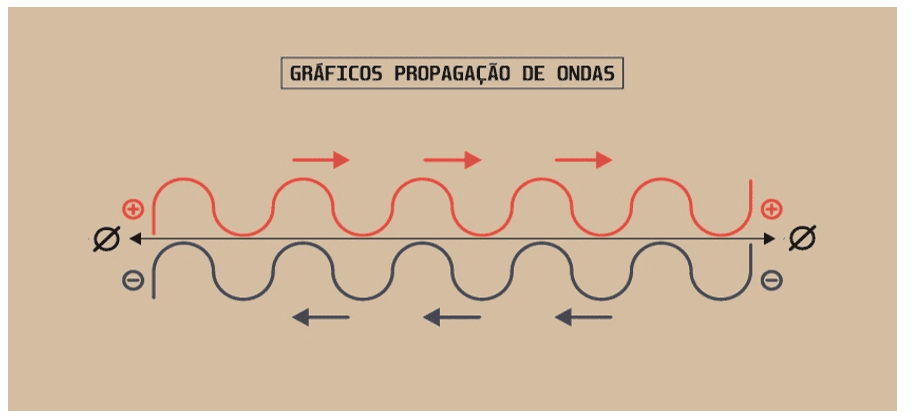
Here is another basic way to express the wave propagation chart:
Graph 8: Wave propagation.
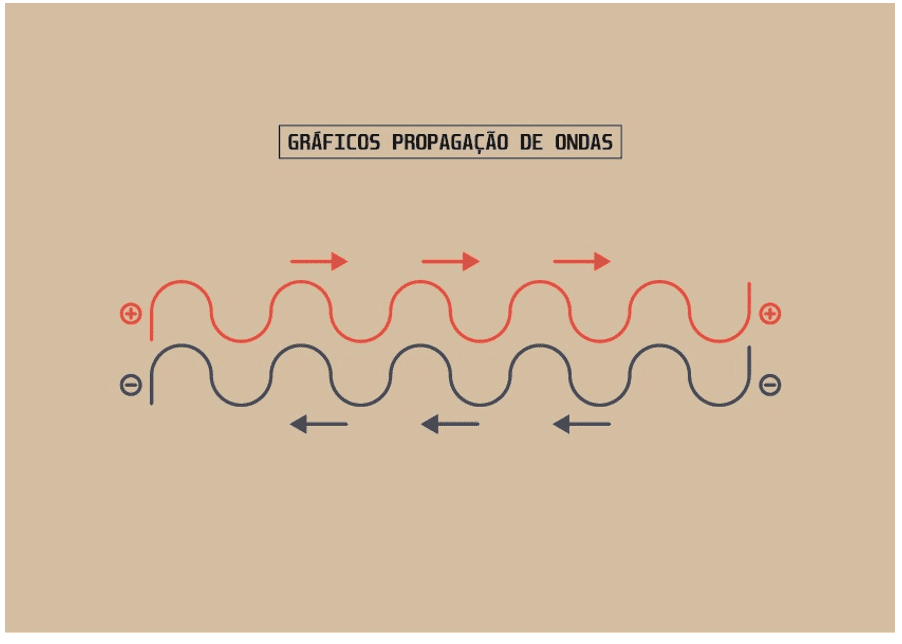
And as we can see in the graphs, 7 and 8 above is that there are two waves, one negative wave in the negative direction and another positive wave in the positive direction.
We can also relate the correct wave propagation chart with the basic circuit of a common battery and in both examples the negative is opposed to the positive, negative equal to negative and positive direction equal to positive direction, and what is negative will always remain negative and what is positive will always remain positive, as follows exemplified below :
Graph 9: Common battery ratio with wave propagation chart..
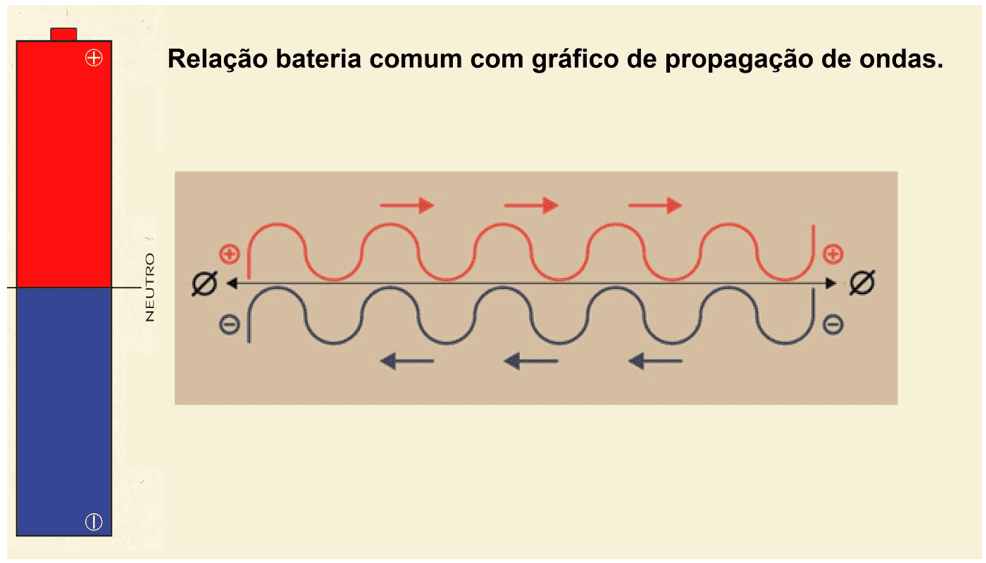
Looking at the chart above both in the circuit of a common battery and in the wave propagation chart, there is a pole or negative wave in the negative direction and another pole or positive wave in the positive direction.
Applying on the X and Y axis. The X axis is the wave size and the Y-axis is the wavelength. The X-axis defines the size of the wave spread or its radius and diameter. The Y-axis will be defined by the height of the wave, or its frequency, for example, whether it is a micro wave or a macro wave.
Graph 10: x-axis and y.
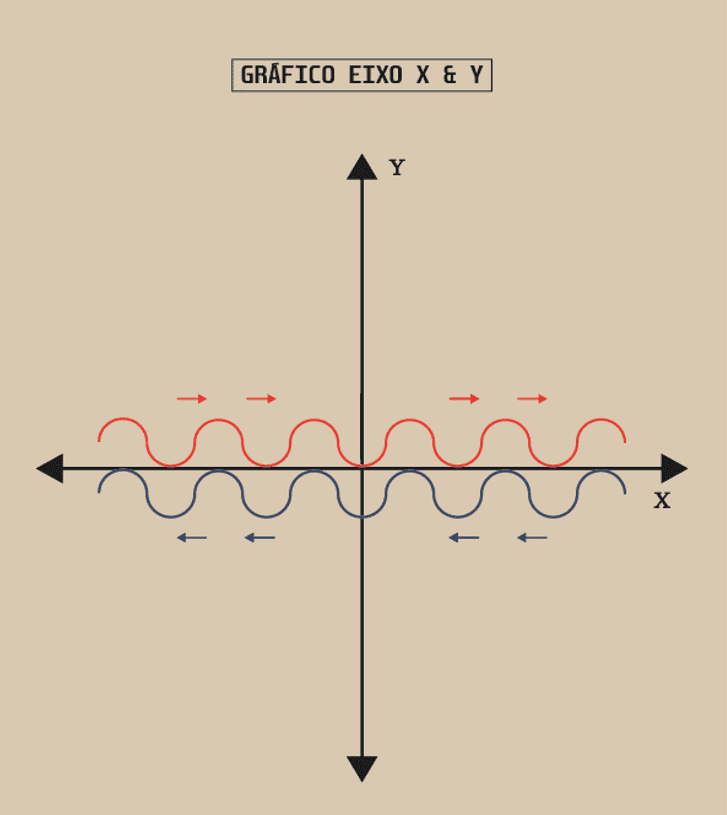
7. APPLICATIONS OF INFINITY IN WAVE PROPARGATION
1 – We can also apply this correct graph in our daily lives. For example, a common TV remote control. There are two batteries. One cell has to be in the positive position and the other cell has to be in the negative position, in opposite directions. In order to close the circuit and the control to function properly, if the two cells are in the same position the circuit does not work, and if the negative wave is not opposed to the positive wave, the remote control with the two batteries in the same direction position, but not, for the control to work, the batteries have to be in opposite positions to each other. , respecting the direction of the waves, because electromagnetic waves propagate in opposite directions. Negative from right to left and positive from left to right. Two poles or two waves, one wave is different from the other. One wave opposite another. In this example of the remote control, we were able to clearly observe the direction of the waves, a negative wave in the negative direction and another positive wave in the positive direction. Proving that the negative wave is opposed to the positive wave. As shown in the chart below.
Graph 11: Remote Control:
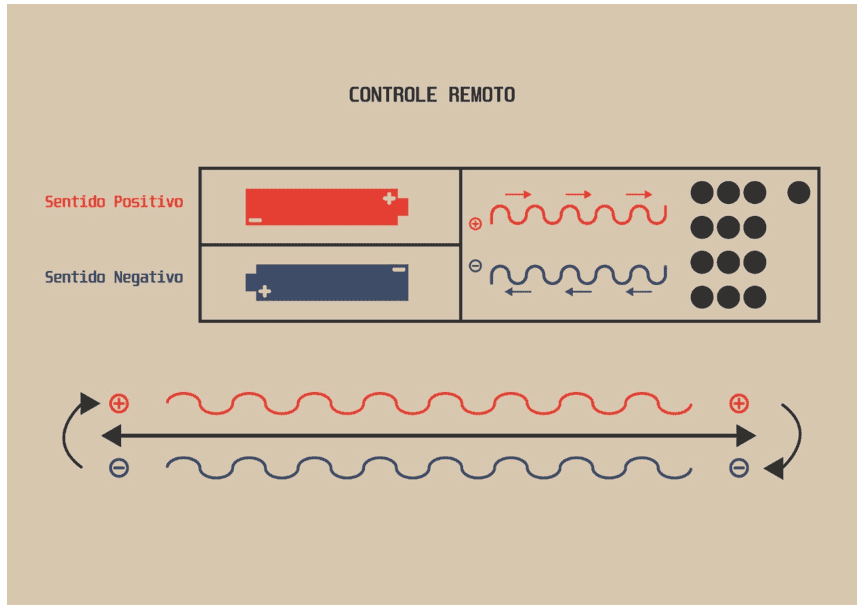
2 – Let’s apply it to what we know. Let’s look at a human silhouette in this example, but it could be of any animal symmetry. The zero = neutral in the center. On the left side infinite negative. On the right side infinite positive. Left side = negative. Right side = positive. So we have a negative eye and a positive eye, a negative arm and another positive arm, or also the legs, one negative and one positive. Thus we have both negative and positive physical characteristics and always the negative left side is on the opposite of the positive right side. As in the chart below:
Graph 12: symmetry.
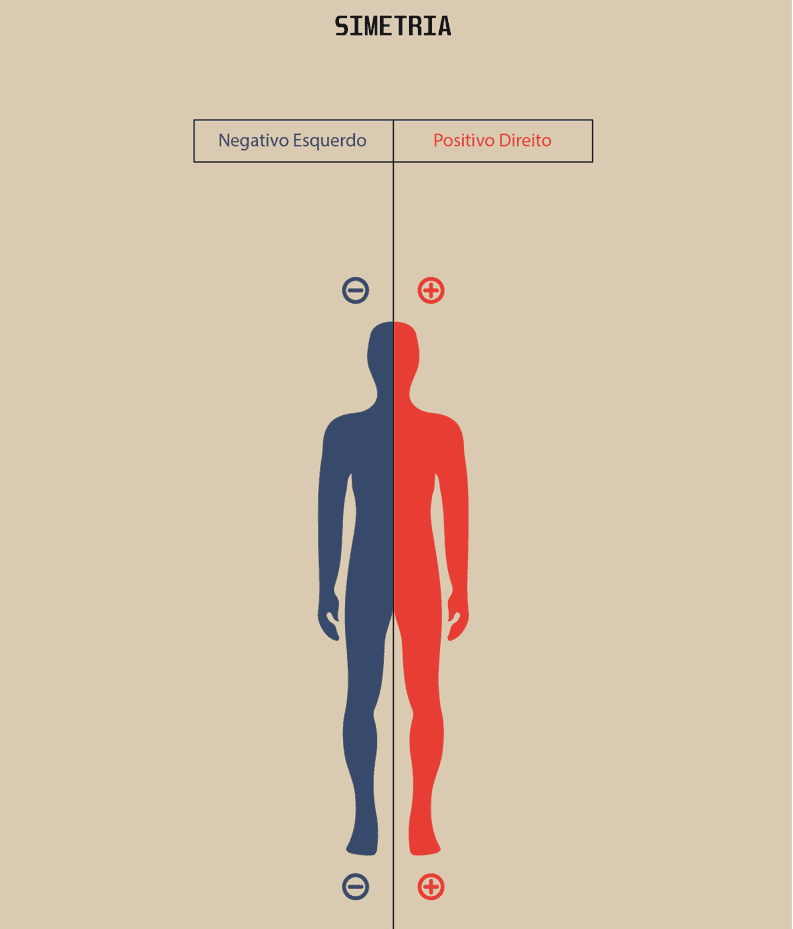
3 – Electromagnetic waves propagate infinitely through two waves, one positive and the other negative in electromagnetic spheres. In a view of spheres, waves expand and propagate in all directions. A circle in 2 dimensions has 360 Degrees. A sphere has 360 x 360 degrees = 129,600 degrees. A 3-dimensional sphere has 129,600 degrees, the two waves propagate in all directions, with the propagation force of the positive wave in the positive direction, in this case time, and the propagation force of the negative wave in the negative, counterclockwise direction.
An example is sound, sound propagates through two electromagnetic waves, a positive electromagnetic wave and another negative electromagnetic wave, the negative wave in the negative direction and the positive wave in the positive direction and in all directions, the two waves propagate in the vertical and horizontal directions. And the waves are not perpendicular or transverse.
An applicable logical and physical observation of how sound or the propagation of sound, through two waves, one positive and one negative occurs, is for example, when a person is in the middle of a classroom, on his cell phone receives a call and plays a song, with a self or audible volume, the sound propagates in all possible directions , all the people around in the middle of the room will hear the phone ring. The sound and waves propagate in all directions, but each wave has its specific direction, negative wave in the negative direction and positive wave in the positive direction.
The justification that Negative and Positive waves propagate in opposite directions and in all directions is like, for example, you can hear a sound box being behind it, or up and down, or you can also hear or talk like a person with them talking with their backs to you, the vibration happens in all directions , but sound is an electromagnetic vibration between a negative wave and another positive wave. And here in this study being identified a distinct meaning or reason for each type of wave, a negative reason and direction for the negative wave and a positive reason and sense for the positive wave. The chart below will propose a more fine-tuned way to observe the propagation of sound through two electromagnetic waves.
The propagating force is as if one wave pushes the other, for example, the negative wave pushes the positive wave, and the positive wave pushes the negative wave, so successively and consequently, if expanded and propagated in all directions. There is friction between the positive wave and the negative wave. The positive wave has a different sense of negative wave, they are opposite. One wave positive sense and another wave negative sense, the two waves propagate in all directions of the rose of the winds, always a wave in the opposite direction to another wave.
There are also electromagnetic fields or layers, a negative electromagnetic field or layer and another positive electromagnetic field or layer and the waves do not mix, which is negative will always remain negative and what is positive will always remain positive. And this statement that waves do not mix, can be observed in the mathematical logics of whole numbers and are also present in logical and physical circuits of batteries, in circuits in general and in the circuits of binary systems, which will be explained and applied later, thus also mathematically what is negative will always be negative, and what is positive will always be positive , and always the negative will be opposed to the positive in all applicable concepts.
And in electromagnetic waves, negative waves circulate and propagate in the negative direction, opposite positive waves, which circulate and propagate in the positive direction.
This chart below is as if you had the perspective of visualizing the sound propagation from above, as an example of the classroom that was proposed here, it’s as if you’ve been visualizing the propagation of sound from a perspective from above the classroom:
Graph 13: wave propagation (Sound) in positive and negative electromagnetic spheres.
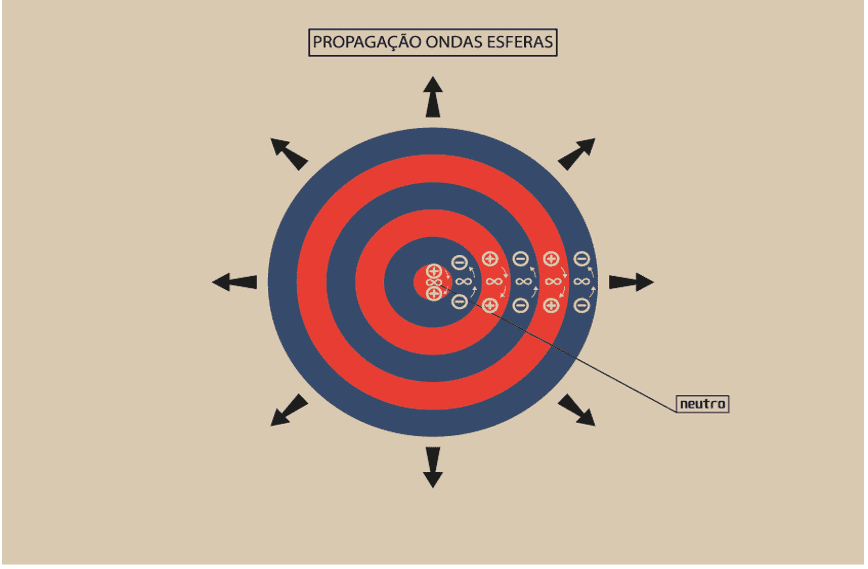
Thus we can observe better in this sound propagation graph that the waves are not ”transverse or perpendicular”, and that thus the waves are opposite, the two waves propagate in all directions, both vertical and horizontal and each wave has its specific direction, the negative wave equal to the negative direction and positive wave equal to the positive direction.
4 – Binary Systems:
A time ago a scientific discovery of a new Binary System was made, this study was published in this same scientific journal and this in the references of this work, but the knowledge of these two reasons of infinity and information about circuits, of how electromagnetic waves propagate and a better form of quantum observation of how sound propagates , through a negative wave and a positive wave, gave the basis and conditions for the realization of the scientific discovery of the Binary 2 system. (BELLAS, 2019)
Besides being a system, it is an electromagnetic circuit and a programming as well, and has at its root the programming of negative and positive binarily, then if it programs negative and positive through 0 (zeros) and 1 (ones), and the negative is opposed to positive binarily also, ie in programming and binary circuit the negative is opposite the positive , the Binary System is an electromagnetic circuit that works with negative and positive, so this is more a relationship and confirmation that waves propagate in opposite directions and not transverse or perpendicular. Because both waves and circuits are electromagnetic.
But as for the circuit, the knowledge present in this study helped to identify technical differences between the logical and electromagnetic circuits of binary system 1 for binary system 2 and thus helped to realize this discovery.
In the development of the logical circuits of binary systems programming, we can identify and relate the Negative and positive of various mathematical, logical and physical concepts, in them also have at its root always the negative opposite to the positive, there are two possibilities and always antagonistic, as follows these examples below:
1 – Negative / Positive (Physical logical circuit)
2 – False / True
3 – No / Yes
4 – Left / Right
5 – Minimum / Maximum
6 – Nothing / All
7 – Off / On
8 – Absence / Presence
9 – Low / High
10 – Off / Lit
11 – – / + (Minus sign and more mathematics)
12 – < / > (Smaller sign and higher mathematics)
13 – ≤ / ≥ (Sign less than or equal to and signal greater than or equal to)
14 – Negative integers / Positive integers (Mathematical logic of Binary System programming 2)
15 – 0 / 1 (Zero and One, in this case zero is negative, as happens in Binary System 1, but I depend on the logical disposition of binary programming zero can function as neutral as well, as it happens in Binary System 2)
The intention of the information of this study is to provide a new vision, relating and applying the negative and the positive in several ways, as it was exposed with technical examples of logics, through figures and graphs and in the information present here, in all the concepts related here and applied the negative is opposite to the positive and is not ‘perpendicular or transversal” as questioned in this study.
8. CONCLUSIONS
By logical aspects and based on the logic of the two reasons of infinity, one negative and the other positive of whole numbers, and on the logic of electromagnetic circuits that also work with negative and positive both opposites, the information and knowledge present in this study and in its graphs are more up-to-date and close to reality.
The meaning of the reasons for these two forces, negative and positive, can be applied in all mathematical, logical and physical senses, through whole numbers, batteries, magnets, logical systems, physical and logical circuits of how is the case of binary systems, in wave propagation graphs as exposed here, and various other types of applications, such as the symmetry of beings and even the geographical positioning of the poles on the planet earth , and that thus in all the examples present here the negative and positive are always opposed to each other. And it is not perpendicular or cross-section as questioned here.
But in summary, the purpose of this study is to question and confront all the graphic studies that appear in research on how waves propagation is, providing an updated graphic view of observing how negative and positive electromagnetic waves propagate and behave. And also propose a concept of visualizing the propagation of sound through two negative and positive electromagnetic waves. In addition to deciphering and showing a new vision as to which there are 2 observable Infinites, one negative and the other positive, mathematically proven with the logic of whole numbers. And to prove that the waves are not perpendicular or transverse, and that yes, they are clearly opposite, both applied and observed in mathematics and physics. And thus demonstrate the relationship of the 2 infinites with the propagation of electromagnetic waves.
Demonstrate that there are two distinct infinite reasons for identifying what infinity is, both applied in mathematics and physics. A negative infinity opposite positive infinity.
This study also brought more information on how the logical circuits of binary systems work, but for better knowledge about the subject of scientific discovery of binary system 2, the article is in references.
This study will provide the basis for research and scientific discoveries as has already happened. The intention of this study is also to provide a new graphic view of how electromagnetic waves propagate, so that when searching for a graph of wave propagation on the Internet, this information appears that is more accurate and up-to-date of how waves propagation is.
The main intention of this study is to inform. Close to reality, it may just be a detail, but if you don’t see or can’t see properly, you can’t calculate right, but seeing and seeing better, if you can calculate better, so it’s easier to observe the propagations of waves through these graphs expressed in this study.
Examples of charts being disputed:
Graph 14: wave propagation.
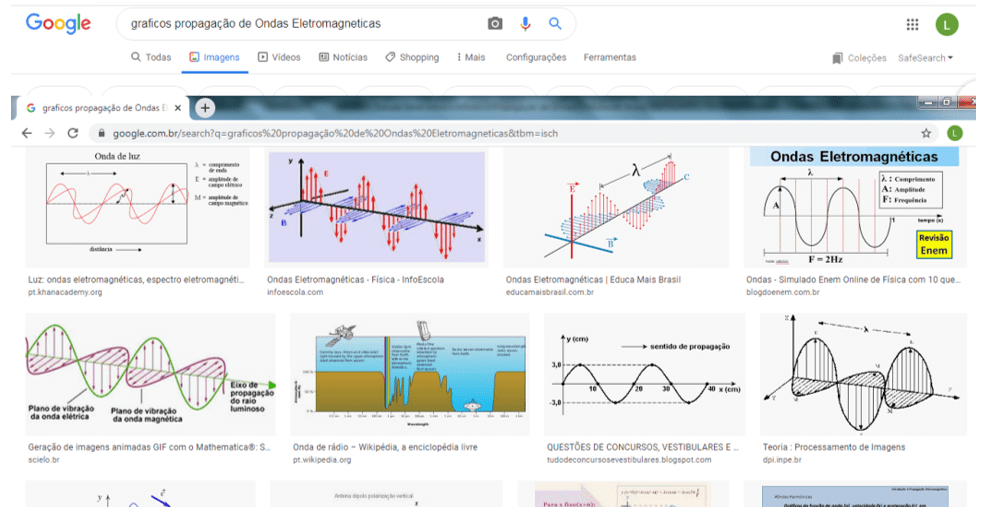
Correct wave propagation charts:
Graph 15: propagation of waves.
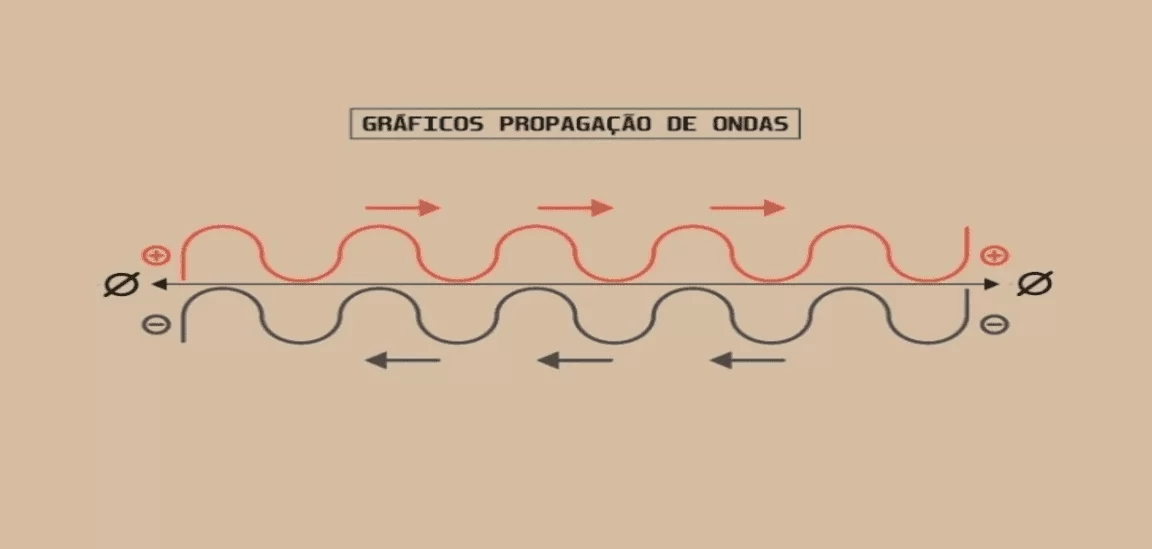
Graph 16: proportion of waves.
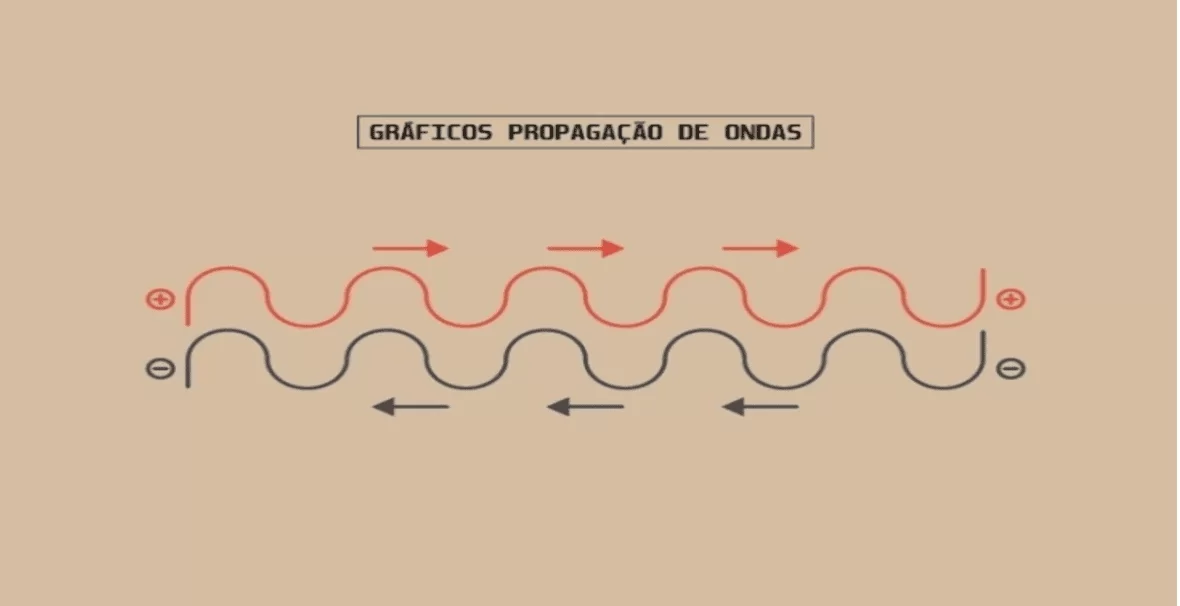
REFERENCES
BELLAS, L. D. Sistema binário 2 – Código Fechado. Revista Científica Multidisciplinar Núcleo do Conhecimento. Ano 04, Ed. 02, Vol. 05, pp. 110-151. Fevereiro de 2019. ISSN: 2448-0959.Disponível em: https://www.nucleodoconhecimento.com.br/tecnologia/sistema-binario-2-codigo-fechado
HELERBROCK, Rafael. Ondas Eletromagnéticas. Mundo da Educação. Disponível em: https://mundoeducacao.uol.com.br/fisica/ondas-eletromagneticas.htm#:~:text=Ondas%20eletromagn%C3%A9ticas%20transportam%20energia%20atrav%C3%A9s,meio%20material%20para%20propagar%2Dse.
MAOR, ELI (1991). To infinity and beyond: a cultural history of the infinite (em inglês). Princeton, N.J.:Princeton University Press. ISBN 978-0-691-02511-7
PESQUISA BING.:Infinito. Disponível em: https://www.bing.com/search?q=infinito&qs=HS&pq=in&sc=8-2&cvid=B59BFC32A83D4D7F81C9F0B403E7F694&FORM=QBLH&sp=1c
PESQUISA BING.Propagação de Ondas. Disponível em: https://www.bing.com/images/search?q=propaga%c3%a7ao+de+ondas&form=HDRSC2&first=1&scenario=ImageBasicHover
PESQUISA GOOGLE.Propagação de Ondas. Disponível em: https://www.google.com/search?q=propaga%C3%A7%C3%A3o+de+ondas&rlz=1C1CHBD_pt-PTBR903BR903&hl=pt-PT&sxsrf=ALeKk01uXbcZXViGvxCkRhfYu21I9_NbXQ:1593470133251&source=lnms&tbm=isch&sa=X&ved=2ahUKEwjhlILqiqjqAhVRGbkGHY-4BKwQ_AUoAXoECBEQAw&biw=1536&bih=722
[1] Graduated in Business Administration with specialization in Foreign Trade.
Sent: May, 2020.
Approved: November, 2020.

